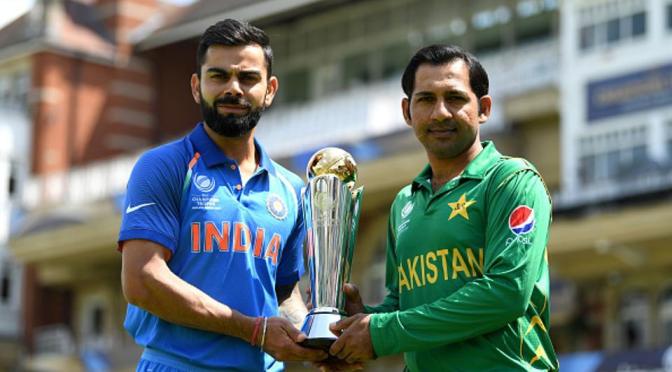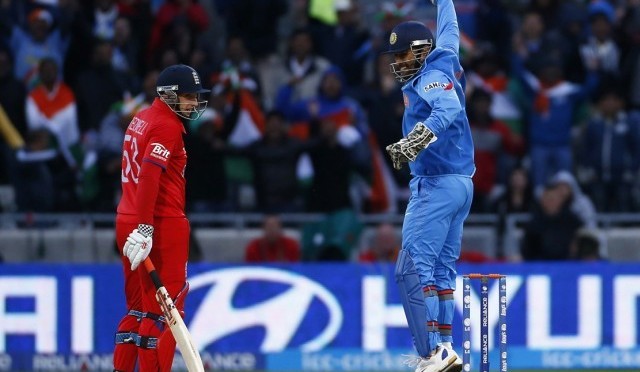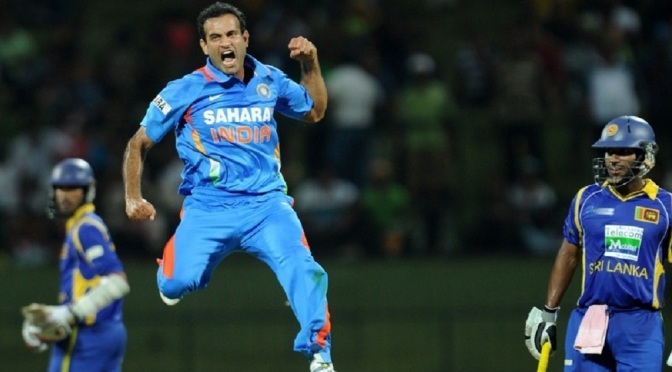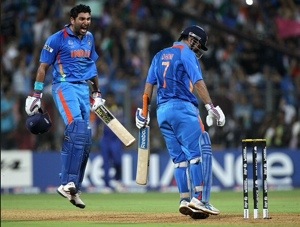How many of you remember Endulkar episode? Media hounded a 34-year-old Sachin Tendulkar in 2007. In every second article, people were reminded that Tendulkar has passed his prime and no longer deserved a place in Team India.
Tendulkar, however, thankfully did not bog down to the pressure created by the media. Selectors, considering Sachin’s iconic status in the world cricket, also did not gather enough courage to drop him. Torrid 2007 passed and Sachin got his mojo back. He showed the world that he was still the master of his game. After the Endulkar episode, Sachin was judged ICC Cricketer of the year in 2010.
A 36-year-old MS Dhoni, is facing the same issue. Since 2015 World Cup, he is being pestered about retirement in every press conference. His every inning in IPL 2017 was scrutinized like never before. Cricket experts have already started to write his obituary. Ex- captains are questioning his place in Team India. In short, circumstances are being created to force him to say goodbye to cricket but Dhoni has, surprisingly, found support from overseas players. Some even went on to say that Dhoni has done enough for Indian cricket and has earned the right to say goodbye to cricket as and when he likes.
Now, there are two questions hanging around here. First, “Does any out-of-form player has right to decide on the timing of his retirement?” Second, “Can Dhoni get his mojo back like Sachin did in 2008 or is it all over for one of the greatest ODI players?”
To answer the first question.
When a player is playing an individual game – where he is representing none but himself – he has every right to continue playing even if he is in bad form. You cannot ask a player to retire because he is no longer winning trophies. An outsider may see a match as a matter of winning or losing, a player sees it as something that he enjoys doing. So, a player in individual sport representing oneself has every right to take a call on his retirement as and when he likes because his game in not affecting the performance of any team. Leander Paes can go on playing tennis as an individual but to play in Davis Cup for India, he would have to fight for his place.
In a team sport, an out-of-form player has no right to decide on the timing of his retirement. A team becomes great not by letting underperforming great players continue playing but by bringing in new players and grooming them to replace great ones. So, an underperforming Dhoni has no right to take a call on his retirement as and when he likes. He can continue to play as long as he fits into team’s scheme of things and not because he wants to continue playing. Remember, the team is always bigger than the individuals, however great individual maybe.
Now, the answer to the second question.
In last two year, Dhoni’s exploits with the bat are nowhere near to what it used to be. He is now a shadow of his former self. He averages 38.80 in 24 ODIs since 2015 World Cup. In away matches, his average drops to 25.87 in 11 matches and that’s a staggering fall for a man whose overall average in ODIs is more than 50.
However, Dhoni is not completely out of form. He shows flashes of brilliance amidst mediocrity: the century against England in the last ODI series that India played, the match winning 80 runs in October 2016 against New Zealand, few scintillating knocks in IPL 2017. These flashes of brilliance convince us that Dhoni, although going down the hill, still has prowess that can help team India in ODIs.
In the second half of Dhoni’s career, he changed his batting style. He started slow, took the match til the end and won the match by hitting lusty blows in the last few overs.
We have seen many episodes of “Dhoni and the last over”. Two years back, there was certainty that Dhoni will win it for India in the last few overs. His nerves of steel and his powerful hitting sealed matches for India many times but, of late, he is not able to win matches for India by hitting lusty blows in last over.
Nowadays, whenever Dhoni comes to bat, he plays in binary mode. He either blocks the ball or hits them out of the ground. He struggles to rotate the strike in the middle overs that makes required run rate go higher. If Dhoni gets out in such situations, it becomes impossible for other players, with their limited capabilities, to score at an exceptionally high-required run rate and win matches for India. Even if Dhoni remains till last, bowlers have now found chinks in his armour. They have now identified weak areas where Dhoni is not capable of hitting big shots. Wide yorkers, full outside off deliveries and short pitch stuff have become go-to delivery for bowlers as shown by Rabada, Bravo etc. in recent times.
Dhoni often says that if he is not able to finish the match than a younger player would find it even harder to do it. It is true to some extent but if a youngster is not given chance how would team India get a finisher for future?
One good thing about Dhoni is that he still puts the price on his wicket and does not gets out easily. Recently, team India made a good move by sending Dhoni at no. 4. It is a step in right direction. It is going to help Dhoni to take his time to settle and play the role of run accumulator and leave the finishing job for youngsters like Manish Pandey, Kedar Jadhav, Hardik Pandya etc.
Another thing that goes in Dhoni’s favour is his wicket keeping. Although the wickets go in the account of bowlers but some of them are just because of Dhoni’s brilliance. His super-quick hands behind the wicket and sharp reflexes do the magic that no other wicketkeeper can match. He also brings in his crucial inputs when India is in the field. He is still guiding force of Captain Virat Kohli, which was evident during last ODI & T20 series that India played.
These things help Dhoni to keep his place in team India but believe it or not, Champions Trophy is going to be acid-test for Dhoni. If he fails here, we may never see him wearing the blue jersey again. Players become great not only because they know how to perform but also because they know how to bounce back when they are down and out. At the age of 36, time is running out for Dhoni but hopefully, he will bounce back.
Remember, when the going gets tough, the tough get going and Dhoni is certainly toughest of them all.







